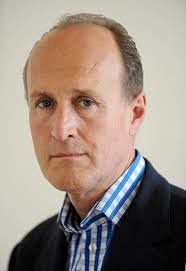By Chris Mottershead
At its inception television posed a problem for broadcasters because unlike other media there was no ‘point of sale’, so funding came either through the TV licence fee or by selling spot advertising. As a consequence, ITV had to attract the audiences that advertisers were interested in reaching and that audience had to accept ad breaks. This arrangement underpinned the TV system in Britain until the advent of cable and satellite. These systems could transmit more programmes and subscribers were charged. Because of this direct income, the operating companies could take a different approach to programming, building audiences to support more complex dramas. Home Box Office (HBO) were probably first in this field. The Wire and Sopranoes were examples of a new style of TV drama, spread over several series. This meant that these new services did not have to appeal to as wide an audience as possible.
This process has been taken further with the development of digital streaming services which provide ‘video on demand’ and can be accessed not only in the home but via mobile devices. Netflix and Amazon are two of the leading subscription companies now providing a considerable range of programming. In the US 10 million homes have cancelled cable or satellite services since 2010. The operators of these new services have realised that to attract and keep their customers they need to produce new, exclusive dramatic content. Netflix has embarked on a major production programme. Last year (2017) they spent $13 billion on new content which was more than all the other US broadcasters together and more than four times the amount invested by the UK PSBs..
Technological changes are changing the way we view content as well. One trend is ‘binge viewing’, whereby a number of episodes of a series are watched in succession. More widespread is time-shifted viewing, where viewers use video on demand to watch programmes when they choose.
There are several threatening aspects of these trends for the PSBs. Between 2013 and 2017 3.5 million households in UK cancelled their licence fee, presumably deciding that they did not wish to watch PSB programming, but rather rely on streaming services. This is obviously very worrying for BBC. There is also the problem of whether or not to compete with Netflix. The amount they are spending commissioning content would seem to be something BBC can only match in a few series. And this is at a time when the BBC is faced with the huge cost of free television licences for the elderly. It seems the BBC may be forced to examine its position and to perhaps emphasise regional and national programming which is of less interest to the major streaming companies.
It truly is a different world from the era of three channels and no means of recording programmes in the home. In those limited conditions, television became part of national culture. How will television be developed in this new digital world?
Chris Mottershead is a former Trustee of VLV.







Follow Us